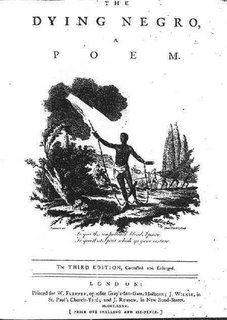
Gentlemen in Question is set in 1792, when England was beset by fears of invasion, spies and even the thought of a revolution to equal the one taking place in France. Beneath the insouciance of the haut ton as they carried on with their house parties and social visits there was a very real concern that their social order might be overturned. Since Gentlemen in Question is set within the confines of a country house, these concerns are barely mentioned but they colour the attitudes of my characters, making them prone to suspicion and influencing their decisions.
In my latest book the characters are fully aware of the changes taking place in their world, and live their lives against a colourful and exciting backdrop of social upheaval. The Belles Dames Club, which is published in August, is set in 1786,a time of great change. The huge head-dresses and heavy gowns of the ladies were gradually being replaced by simpler styles and plainer fabrics such as muslin. Hair powder was beginning to lose favour, and gentlemen were relinquishing their wigs and moving towards a more sober style of dress. Some of this was a reaction to the political unrest that was building in France, but it was also a reflection of the changing attitudes of the country: it was not enough to have the local gentry providing charity for the destitute, a social conscience was growing, and among other things it made many people in England question the morality of the slave trade.

Poems were written to publicise the plight of the slaves, such as The Dying Negro by Thomas Day (see picture). I have one of my characters reading an extract from this poem at a fashionable soirée. I have mentioned the campaigner Granville Sharp in my book: for the period in which The Belles Dames Club is set, he was talking to groups, encouraging them to join forces to fight slavery – a year later in 1787 he founded the Society for the Abolition of the Slave Trade and the campaign really got under way, although it took another 46 years to get The Anti-Slavery Act passed.
It was also a time of scientific discover and exploration – the Royal Society with its energetic president Sir Joseph Banks was busy promoting science and funding expeditions to being back new plant species for the Botanic Gardens at Kew.
I have touched on all these points in The Belles Dames Club, all in a minor way but they are vital to the story and to the lives of my characters. Yet there is so much I have not mentioned, including the Industrial Revolution, but that's for another book……
Melinda Hammond
Gentlemen in Question – pub. Robert Hale Ltd

2 comments:
That's why I wish people who talk down historicals or romances in general should sit and read one, because I think it's just like any other book, you have to put the research into it or people will notice. And then they won't want to continue reading it. But I guess people will always be that way, never actually trying something first. But I certainly am one who loves historicals and can't get enough! :)
Lois
Glad to have found you kindred spirits! I, too, write maligned genre fiction and share a publisher with some of you. What I hear is "Just another silly shoot-'em-up." The novels I write are for Robert Hale's Black Horse Western series (18 so far). They are, of course, historicals under another name and the ranks of BHW authors include a number of fine women writers. Some (e.g. Gillian F. Taylor) are particularly keen researchers. Recently, against established practice and advice, I began a series with a female central character, Misfit Lil. Are they Chick Lit Westerns? Maybe someone here can tell me. The place to begin investigations is www.blackhorsewesterns.com, a free online magazine. The lead article for the Sept quarter's edition introduced Lil. She gets another mention in the current Hoofprints column . . . and so do the line's ladies. See you there; love to have your feedback!
Post a Comment